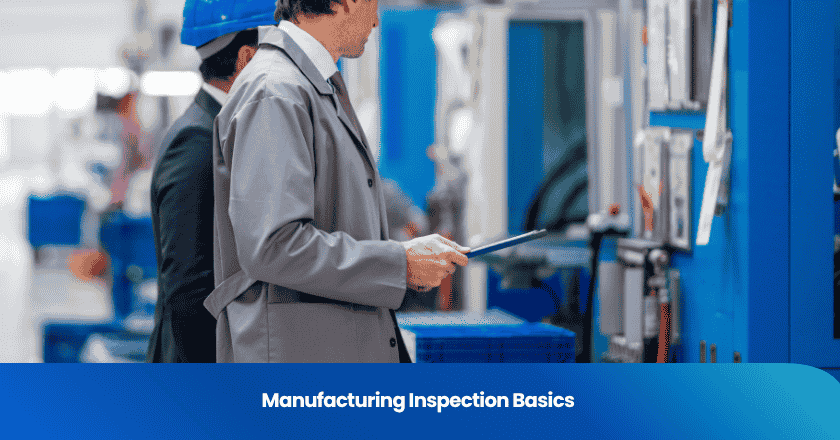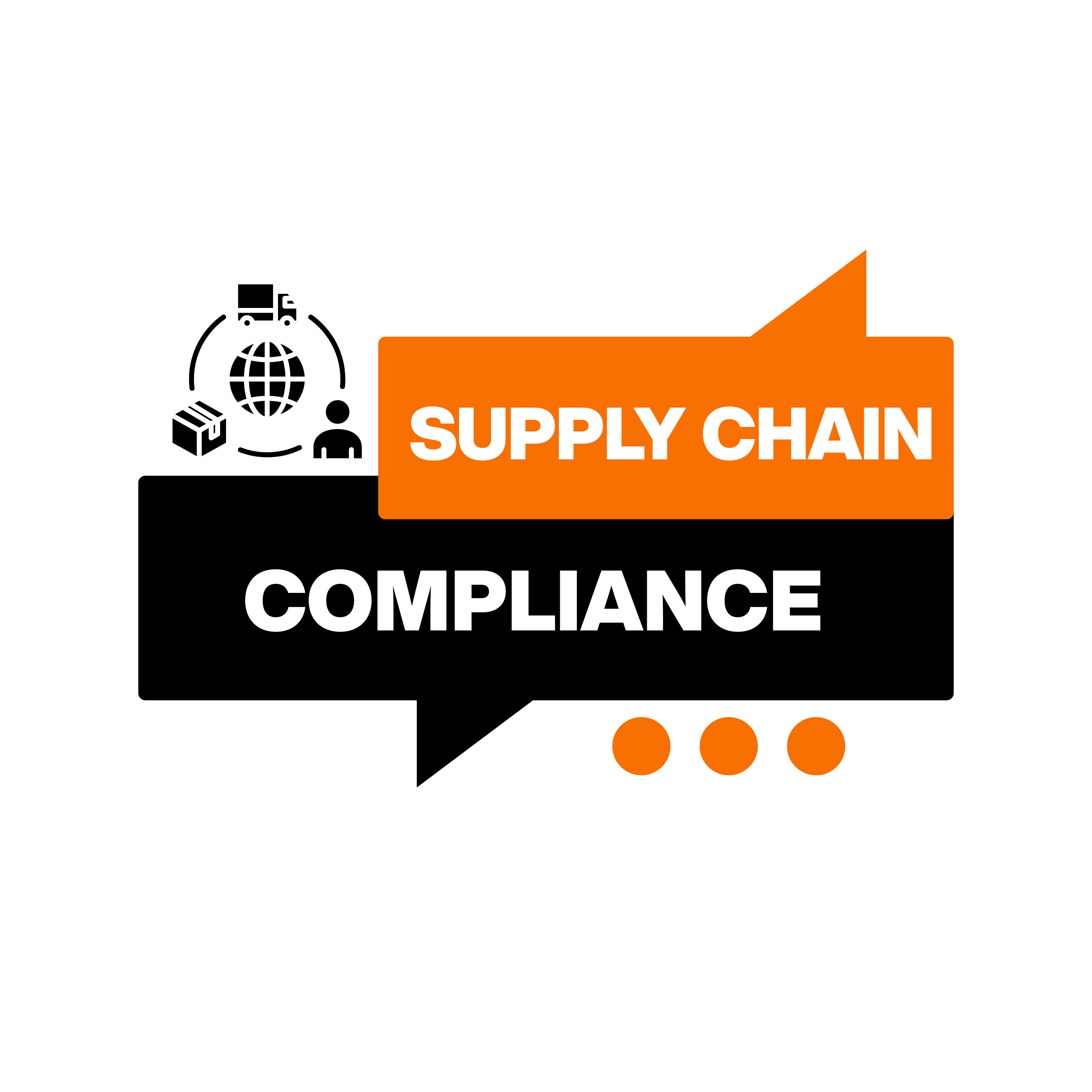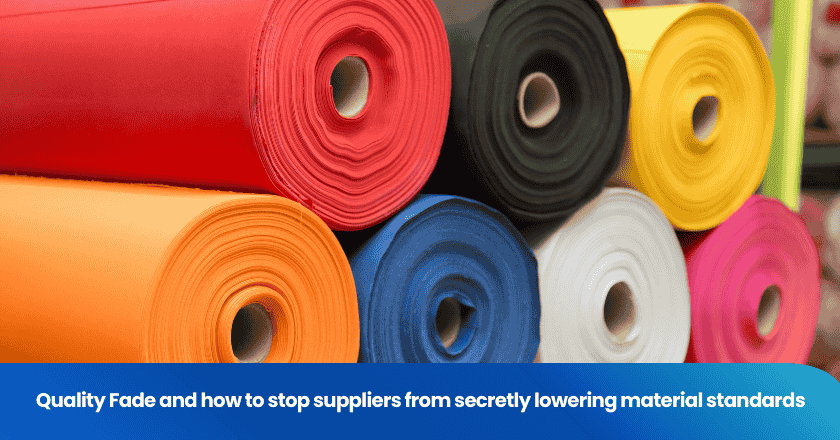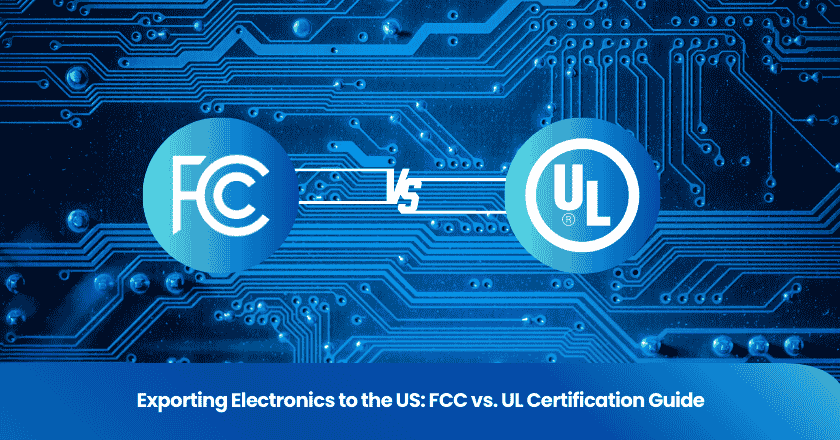
Manufacturing inspection means checking products and processes to ensure they meet strict standards. You rely on inspection to protect quality, maintain safety, and achieve compliance in any factory setting. Skipping inspection increases the risk of defects, product recalls, and financial loss. Inspection works as a systematic, multi-stage process that supports business success.
Human errors in assembly lines account for up to 23% of all quality-related issues, showing that inadequate inspection processes significantly contribute to manufacturing defects.
Key Takeaways
- Manufacturing inspection is essential at every stage of production. It helps catch defects early, ensuring high-quality products and reducing waste.
- Implementing a Quality Management System (QMS) is crucial. A QMS streamlines processes, enhances efficiency, and ensures compliance with industry standards.
- Automated inspection technologies significantly improve accuracy and reduce labor costs. They help identify defects faster, leading to better quality control.
- Regular staff training on quality standards fosters a culture of accountability. Well-trained teams are more effective in maintaining product quality.
- Transparent inspection processes build customer trust. Sharing inspection results with customers enhances satisfaction and encourages repeat business.
What Is Manufacturing Inspection
Definition
Manufacturing inspection refers to a structured process where you evaluate products and processes at different stages of production. You use this approach to confirm that every item meets established quality, safety, and regulatory standards. The process does not focus only on the final product. Instead, you check materials before production, monitor quality during manufacturing, and assess finished goods before shipment. This multi-stage approach helps you catch issues early and maintain consistent results.
Tip: You can break down manufacturing inspection into three main categories:
- Pre-Production Inspection
- In-Process Inspection
- Final Quality Assessment
Many people believe that inspection happens only at the end of production. In reality, you need to monitor quality throughout the entire process. This mindset helps you prevent defects, reduce waste, and avoid costly recalls.
Core Purpose
The core purpose of manufacturing inspection centers on ensuring that your products consistently meet or exceed customer expectations and regulatory requirements. Leading manufacturing companies treat inspection as a proactive, systematic procedure. You assess products at every stage to maintain high quality, lower defect rates, and build customer trust.
You might encounter several misconceptions about manufacturing inspection.
The following table highlights common myths and the facts that dispel them:
| Misconception | Evidence |
|---|---|
| Quality is only checked at the end of production | Implementing a QMS with in-process checks can identify and correct issues before the final product is completed, reducing waste and costs. |
| Quality is the responsibility of a separate team | Quality should be a company-wide mindset; when management prioritizes quality, employee performance improves, leading to fewer non-conformances and reduced scrap. |
| Quality management systems are just an added cost | While there are upfront costs, a QMS is an investment that streamlines processes, reduces risks, and enhances overall efficiency. |
| Documentation is a burden | Digital quality documentation systems alleviate frustrations by providing accessible, efficient documentation workflows. |
| A QMS is optional for manufacturers | A QMS is essential for tracking documentation, identifying bottlenecks, and ensuring compliance with industry standards. |
You will find that different industries tailor their inspection methods to meet specific regulatory requirements. For example, you might use First Article Inspection (FAI) to verify that the first product matches engineering specifications. Golden Samples serve as master references for comparison during production. Acceptable Quality Limit (AQL) methods help you determine the maximum number of defects allowed in a batch.
Manufacturing inspection gives you the tools to identify problems early, maintain compliance, and deliver reliable products. When you make inspection a core part of your operations, you set your factory up for long-term success.
Types and Stages
Manufacturing inspection is a systematic process that you perform at several key stages: before, during, and after production. Each stage plays a unique role in maintaining quality and preventing defects.
Incoming Inspection
You start with incoming inspection. This step checks raw materials and components before they enter your production line. By catching problems early, you avoid costly issues later. Incoming inspection helps you:
- Enhance quality control from the beginning by detecting issues early.
- Prevent defective products from reaching customers, ensuring high-quality output.
- Protect your brand reputation and customer satisfaction through strict quality standards.
- Encourage continuous improvement by providing feedback on material quality.
- Meet quality standards and regulations necessary for safety.
In-Process Inspection
In-process inspection is the backbone of quality control. You use in-process inspection to monitor products as they move through each stage of manufacturing. In-process inspection allows you to catch defects as soon as they appear. You can adjust processes in real time, which reduces waste and improves efficiency. In-process inspection also ensures that each step meets your standards before moving forward. In-process inspection is not just a checkpoint; it is a continuous activity. In-process inspection helps you maintain consistency and avoid bottlenecks.
In-process inspection supports your team by providing immediate feedback. In-process inspection also reduces the risk of large-scale defects. In-process inspection is essential for meeting regulatory requirements. In-process inspection can identify trends and recurring issues. In-process inspection allows you to implement corrective actions quickly. In-process inspection is a proactive approach to quality. In-process inspection builds confidence in your production process.
In-process inspection is a key factor in customer satisfaction. In-process inspection helps you achieve operational excellence. In-process inspection is a foundation for continuous improvement. In-process inspection supports lean manufacturing goals. In-process inspection minimizes rework and scrap. In-process inspection ensures that only conforming products move to the next stage. In-process inspection is a cost-effective way to manage quality. In-process inspection provides valuable data for process optimization. In-process inspection is a requirement for many industry standards.
In-process inspection helps you maintain traceability. In-process inspection is a team effort. In-process inspection empowers operators to take ownership of quality. In-process inspection is a best practice in modern manufacturing. In-process inspection is your first line of defense against defects. In-process inspection is critical for high-mix, low-volume production. In-process inspection adapts to changes in design or process. In-process inspection is a smart investment for any factory.
Final Inspection
Final inspection takes place after production ends. You use this stage to verify that finished goods meet all specifications before shipping. The impact of final inspection is clear:
| Aspect | Impact |
|---|---|
| Defect Identification | Helps identify defects and non-conformities early |
| Cost Prevention | Prevents costly recalls |
| Customer Satisfaction | Enhances customer satisfaction |
| Consistent Quality | Maintains consistent quality |
| Regulatory Compliance | Complies with regulatory requirements |
| Brand Reputation | Upholds brand's reputation |
| Efficiency | Boosts efficiency by minimizing waste and rework |
| Productivity and Profitability | Contributes to overall productivity and profitability |
Automated Inspection
Automated inspection is transforming quality control. You use advanced technologies to reduce human error and increase accuracy. Automated inspection systems include:
- Cameras that capture detailed images for defect detection.
- Lighting that enhances image clarity by eliminating shadows and glare.
- Sensors that provide additional data for quality assessment.
- Processing units that execute high-speed data analysis.
- Software that controls the inspection process and incorporates machine learning.
- User interfaces that allow operators to configure and monitor the system.
- Integration that ensures communication with production equipment.
Automated inspection systems use AI and deep learning to deliver precise, consistent results. These systems can identify defects faster and more accurately than human inspectors. For example, some factories have reported up to an 80% improvement in defect detection rates and a 30% reduction in labor costs. Automated inspection makes quality control scalable and repeatable, helping you achieve higher standards with less risk of human error.
Importance
Product Quality
You cannot achieve consistent product quality without a robust quality inspection process. Every step of inspection helps you catch defects before they reach your customers. When you invest in prevention—such as training your team and improving your systems—you reduce defects before they occur. This proactive approach enhances product quality and supports your reputation for excellence.
Quality inspection ensures that you meet or exceed quality standards at every stage. You use inspection to verify that your processes align with industry regulations and customer expectations. When you focus on quality inspection, you build a foundation for long-term success. You also reduce the risk of recalls and costly rework. By maintaining strict quality standards, you deliver reliable products that stand out in the market.
Note: Quality inspection is not just about finding faults. It is about building a culture where everyone values product quality and takes pride in their work.
Cost and Waste Reduction
You save money and resources when you implement effective quality inspection. Automated inspection systems reduce manual labor costs and increase accuracy. This approach allows your quality control staff to focus on higher-value tasks. Over time, you benefit from lower waste and improved efficiency.
- Automated inspection systems significantly reduce manual labor costs.
- This approach increases inspection accuracy and throughput.
- Lower labor expenses free up quality control staff for more valuable tasks.
- Long-term savings from reduced waste and improved product quality.
- Increased efficiency justifies the initial investment in automated inspection systems.
Defects in manufacturing create waste through scrap parts and rework. These issues can lead to overproduction and excess processing. You can measure your progress by tracking First Pass Yield (FPY), which shows the percentage of products made correctly the first time. High FPY means less waste and fewer resources spent on fixing problems. Monitoring yield helps you assess the effectiveness of your quality inspection process and supports your waste reduction goals.
You also use inspection to ensure compliance with international safety and quality standards. Meeting these requirements protects your business from legal risks and supports smooth operations.
Customer Trust
You build customer trust by delivering products that meet strict quality standards. Quality inspection plays a direct role in customer satisfaction. When you provide clear evidence of your inspection process, such as video inspections, you help customers understand your commitment to quality. Studies show that customers who view inspection videos report a 10-20% increase in satisfaction. They feel respected and informed, which encourages repeat business and positive referrals.
- Video inspections enhance customer understanding of product issues.
- Customers are more likely to accept recommendations when they see inspection results.
- Customer satisfaction scores rise when you share transparent inspection data.
- Customers who trust your inspection process become loyal advocates for your brand.
You also protect your reputation by avoiding delays, missed service agreements, and costly recalls. Consistent quality inspection prevents defects and non-compliance, reducing the risk of legal disputes and insurance claims. When you prioritize quality inspection, you create a positive feedback loop—customers trust your products, and your business grows stronger.
Tip: Make quality inspection a visible part of your process. Transparency builds confidence and sets you apart in a competitive market.
Quality Inspection Benefits and Challenges
Key Benefits
You gain significant advantages when you implement a strong quality inspection process. This approach supports your quality assurance goals and helps you meet strict quality control standards.
The following table highlights the main benefits recognized by industry experts:
| Benefit | Description |
|---|---|
| Defect Prevention | Quality inspection protocols catch issues before they escalate, saving time and resources. |
| Streamlined Processes | Consistent inspection reduces production delays and rework. |
| Enhanced Reputation | Reliable inspection builds customer loyalty and sets you apart in the market. |
| Reduced Defects | Fewer defects mean lower rework costs and improved trust. |
| Enhanced Efficiency | Streamlined processes and reduced production time boost productivity. |
| Cost Optimization | Better resource allocation and minimized waste lower operational costs. |
| Improved Reputation | High customer satisfaction leads to repeat business. |
You also ensure products are safe, reliable, and meet all quality control standards. Quality inspection supports enhanced quality control, which leads to safer products and consistent results. You see measurable business outcomes, such as cost savings of 15-25% in targeted processes and defect reduction rates of up to 90% within 18 months.
Common Challenges
You may face several challenges when managing quality inspection. Missed defects, lack of training, and inadequate quality control standards can undermine your quality assurance efforts. You might also encounter rushed inspections or inconsistent procedures.
To overcome these obstacles, you can:
- Standardize inspection procedures to ensure consistency and reduce missed defects.
- Train and retrain inspectors regularly to keep skills sharp and prevent errors.
- Use the right tools for inspection to improve accuracy.
- Avoid rushing inspections so you can perform thorough checks.
- Maintain clear inspection records to track defects and spot trends.
- Apply Poka-Yoke mechanisms to prevent assembly errors.
- Organize your workspace with the 5S methodology for better visibility.
- Monitor processes with Statistical Process Control to catch issues early.
- Visualize your workflow using Value Stream Mapping to eliminate waste.
You strengthen your quality assurance system by addressing these challenges directly. This approach ensures your quality inspection process remains effective and reliable.
Best Practices
Standards and Procedures
You set the foundation for effective manufacturing inspection by establishing clear standards and procedures. Start by defining quality standards for every product. Use documented procedures to guide your inspection teams. This approach ensures consistency and compliance across your manufacturing operations. Many manufacturers adopt international standards to improve results.
You also benefit from practices such as developing inspection plans, using advanced technologies, and conducting regular audits. These steps help you maintain high standards in your manufacturing environment.
Staff Training
You cannot achieve reliable manufacturing inspection without well-trained staff. Regular training on quality standards builds a culture of improvement and accountability. Effective training programs can reduce defect rates by up to 30%. When you invest in your team, you see better teamwork and engagement. These qualities are critical for accurate inspection results. Use ongoing training to keep your staff updated on the latest manufacturing techniques and inspection tools.
- Regular training fosters continuous improvement.
- Training reduces defects and boosts inspection accuracy.
- Engaged teams deliver better manufacturing outcomes.
Tip: Schedule refresher courses and hands-on workshops to reinforce skills and adapt to new manufacturing challenges.
Technology Trends
You stay ahead in manufacturing by leveraging the latest inspection technologies. Guided Wave Ultrasonics, AI-powered vision systems, and automated workflows now play a major role in modern manufacturing inspection. These tools offer benefits such as real-time collaboration, centralized data storage, and reduced manual errors.
You also gain from features like on-demand access to documentation and automated workflows. Case studies show that smart factory solutions can reduce defects by 37% and downtime by 28%. When you adopt these trends, you increase inspection speed, improve quality, and ensure your manufacturing process meets industry demands.
You secure your factory's success when you make manufacturing inspection a priority. Systematic, multi-stage inspection delivers measurable results. Organizations with structured processes see a 30% increase in successful evaluations, while 60% of product returns stem from preventable issues. Regularly reviewing your inspection process brings clear benefits:
| Benefit | Description |
|---|---|
| Ensuring Compliance | Verifies adherence to industry regulations, avoiding legal issues. |
| Quality Control | Maintains high standards, reducing defects and meeting customer expectations. |
| Process Optimization | Identifies inefficiencies, streamlining processes and increasing efficiency. |
| Risk Management | Identifies potential risks, enabling proactive mitigation measures. |
| Continuous Improvement | Promotes a culture of ongoing assessment and enhancement of processes. |
Stay committed to best practices and keep up with industry trends to maintain quality and drive business growth.
FAQ
What is the main goal of manufacturing inspection?
You use manufacturing inspection to ensure products meet quality, safety, and regulatory standards. This process helps you catch defects early and maintain consistent results.
How often should you perform inspections in a factory?
You should inspect at multiple stages: before production, during manufacturing, and after completion. Regular checks help you identify issues quickly and keep your processes efficient.
Can automated inspection replace human inspectors?
Automated inspection improves speed and accuracy. However, you still need skilled staff to interpret results, manage exceptions, and maintain equipment.
What happens if you skip quality inspection?
Skipping inspection increases the risk of defects, recalls, and financial loss. You may also face compliance issues and damage your reputation.
Grow your business with TradeAider Service
Click the button below to directly enter the TradeAider Service System. The simple steps from booking and payment to receiving reports are easy to operate.




